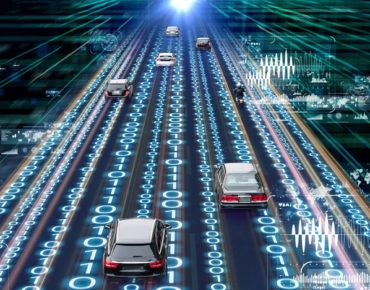Autonomous vehicles are developed with a wide range of self-driving capabilities. Some vehicles provide basic automation, like cruise control and blind-spot detection, while other vehicles are reaching fully-autonomous capabilities. Many of these capabilities are being made possible by AI technology.
copyright by www.enterpriseai.news
 However, before talking about big scale deployments for smart city transportation , more work is needed to improve the AI algorithms and mapping features powering autonomous vehicles. This article reviews innovations in Autonomous Vehicle AI and mapping, which might help secure a future in which autonomous vehicles are deployed city-wide.
However, before talking about big scale deployments for smart city transportation , more work is needed to improve the AI algorithms and mapping features powering autonomous vehicles. This article reviews innovations in Autonomous Vehicle AI and mapping, which might help secure a future in which autonomous vehicles are deployed city-wide.
1. Deep Reinforcement Learning (DRL)
Multiple types of machine learning are being applied to the development of autonomous vehicles, including DRL. This method combines the strategies of deep learning and reinforcement learning in an attempt to better automate the training of algorithms.
When implementing DRL, researchers use reward functions to guide software-defined agents toward a specific goal. Throughout training, these agents learn either how to attain that goal or how to maximize the reward over subsequent steps.
With the help of data collected from current autonomous vehicles, human drivers, and manufacturers, these agents can eventually be trained to operate independently. In the meantime, DRL has useful applications in lower level automation of vehicles. It can also provide value in vehicle manufacturing, where it can be applied to transform factory automation and vehicle maintenance.
2. Path Planning
Path planning is the decision-making process that autonomous vehicles use to determine safe, convenient, and economical routes. It requires taking into account street configurations, static and dynamic obstacles, and changing conditions. Currently, path planning is based on the combination of behavior-based models, feasible models, and predictive control models.
Thank you for reading this post, don't forget to subscribe to our AI NAVIGATOR!
The process occurs roughly as follows:
- The route planning mechanism determines a route from point A to B according to available roads or lanes.
- A behavioral layer is then applied to determine vehicle movement according to environmental variables, such as traffic or weather conditions.
- These determinations are applied to feasible and predictive control models to guide the operation of the vehicle.
- As the trip progresses, feedback from sensors and analyses is fed to these components so adjustments can be made in real-time to adjust for errors or unforeseen events.
In the above process, the relatively easy part is predicting how the vehicle itself will behave under certain conditions. What is more challenging is predicting what might happen in the environment the vehicle is operating in. For example, how can models predict when neighbor vehicles will swerve or pedestrians will enter the street.
To improve these predictions, researchers are applying multi-model algorithms to simulate possible trajectories and speeds of objects. These models enable the autonomous system to prepare for multiple scenarios simultaneously. Then based on evaluated probabilities of each scenario occurring, the system can define how the vehicle responds.[…]
read more – copyright by www.enterpriseai.news


Autonomous vehicles are developed with a wide range of self-driving capabilities. Some vehicles provide basic automation, like cruise control and blind-spot detection, while other vehicles are reaching fully-autonomous capabilities. Many of these capabilities are being made possible by AI technology.
copyright by www.enterpriseai.news
1. Deep Reinforcement Learning (DRL)
Multiple types of machine learning are being applied to the development of autonomous vehicles, including DRL. This method combines the strategies of deep learning and reinforcement learning in an attempt to better automate the training of algorithms.
When implementing DRL, researchers use reward functions to guide software-defined agents toward a specific goal. Throughout training, these agents learn either how to attain that goal or how to maximize the reward over subsequent steps.
With the help of data collected from current autonomous vehicles, human drivers, and manufacturers, these agents can eventually be trained to operate independently. In the meantime, DRL has useful applications in lower level automation of vehicles. It can also provide value in vehicle manufacturing, where it can be applied to transform factory automation and vehicle maintenance.
2. Path Planning
Path planning is the decision-making process that autonomous vehicles use to determine safe, convenient, and economical routes. It requires taking into account street configurations, static and dynamic obstacles, and changing conditions. Currently, path planning is based on the combination of behavior-based models, feasible models, and predictive control models.
Thank you for reading this post, don't forget to subscribe to our AI NAVIGATOR!
The process occurs roughly as follows:
In the above process, the relatively easy part is predicting how the vehicle itself will behave under certain conditions. What is more challenging is predicting what might happen in the environment the vehicle is operating in. For example, how can models predict when neighbor vehicles will swerve or pedestrians will enter the street.
To improve these predictions, researchers are applying multi-model algorithms to simulate possible trajectories and speeds of objects. These models enable the autonomous system to prepare for multiple scenarios simultaneously. Then based on evaluated probabilities of each scenario occurring, the system can define how the vehicle responds.[…]
read more – copyright by www.enterpriseai.news
Share this: